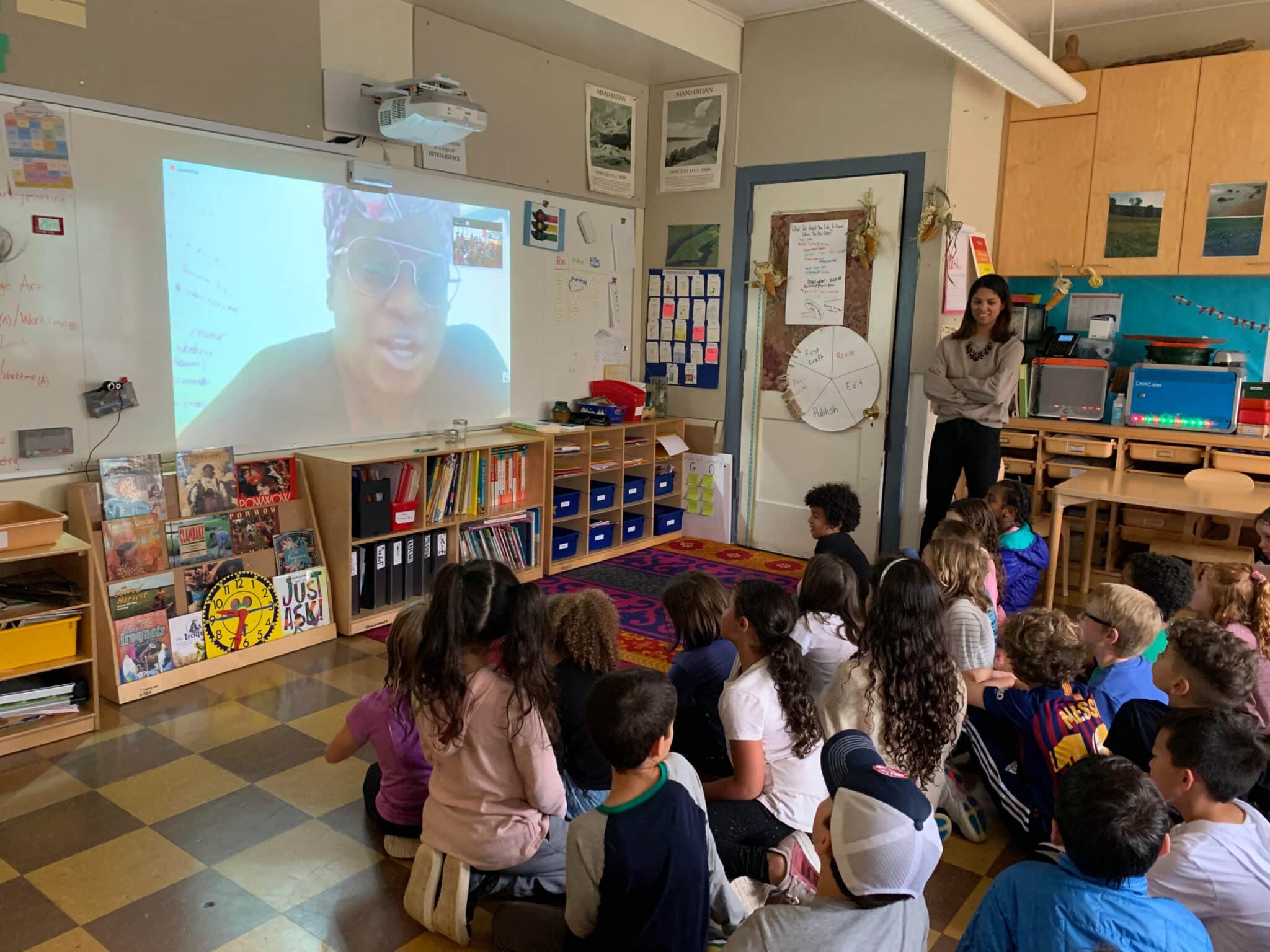The lights are dimmed in the classroom on the 2nd floor of Fieldston Lower, and every eye is focused on the bright projection on the whiteboard. Outside, it’s dull and rainy, but inside, the class crowds around the whiteboard like it’s a fire. 3rd Grade Spanish students fidget with their wet hair — they’ve just come from a swimming lesson — and settle into their spots on the floor.
A woman’s face appears on the screen, and the students yell, “¡Hola, Gloriann!” Gloriann Sacha Antonetty Lebrón’s face lights up. “¡Hola!” she responds.
Lebrón is calling from her office in Puerto Rico, where she runs the magazine “Revista Étnica,” which she founded in 2019. “Revista Étnica” focuses on the Afro-Latinx experience in Puerto Rico, making up for a lack of black representation in Latinx publications. A lover of magazines as a child, Lebrón searched for reflections of her own image in magazines she found in her hometown, but she came up short. “I didn’t see the beauty of black people, my community, the music, the intelligence of my people,” she tells the students.
Lebrón’s father, who traveled to New York for work, would bring back issues of “Essence” and “Ebony” for Lebrón. Seeing what was possible in those magazines, Lebrón decided to make a magazine of her own, and “Revista Étnica” was born.
Fieldston Lower Spanish Teacher Sheyla Ortiz Peña came across the magazine when preparing lessons for Hispanic Heritage Month; she and her students were discussing Spanish-speaking people who have influenced the United States. The magazine was something completely novel: representation of Afro-Latinx people in Puerto Rico, with the most recent issue focusing on children. She immediately ordered a copy for her class.
Reading “Revista Étnica” is part of a broader push by ECFS language teachers to focus on culture: “It just makes more sense to teach language within context,” Peña says. There’s also an effort toward more diversity, equity, and inclusion in the classroom. “Conversations with [Fieldston Lower Diversity Coordinator] Laura Stewart really motivated me to work on especially meaningful projects,” Peña says, and “having a DEI group at Lower has helped many of us spark questions regarding our curriculum and develop new ideas.”

Fieldston Lower’s new community time — an addition to the schedule implemented this year that allows students to go to assemblies and other events — allows for extra time to pursue projects outside the language-learning mandate of vocabulary and grammar. Because of time constraints, Peña says, the teaching of culture only recently had room to become a part of the conversation. Revista Étnica has provided an opportunity to go deeper and showcase the hugely diverse population that speaks Spanish.
Discussing Afro-Latinx representation in Puerto Rico also serves as a conduit to confront racism. After she found the magazine, Peña explained colorism to her students and the ways in which racism impacts populations’ abilities to thrive. The students were rapt, and an idea struck Peña: she’d invite Lebrón to her class.
Peña reached out to Lebrón over Instagram and set up the meeting. While Peña and Lebrón hammered out the scheduling, the students set to work brainstorming the questions they would ask her.
On the big screen, Lebrón tells the students about herself — she’s from Carolina, Puerto Rico (“Just like how you have the Carolinas,” she says), and has an older brother. She shows pictures of her two children, and the class collectively aw’s.
Peña opens up the discussion to questions from the students, who erupt into raised arms and jockey to get on camera. A student stands up and asks, “¿Cuál es tu color favorito?” (What is your favorite color?) Lebrón smiles. “Purple and yellow,” she says. “They make me feel happy.”
Questions range from “¿Cómo estás?” (“Muy bien,” Lebrón answers) to “Why did you make an issue all about kids?” (“I understand the power and importance of youth,” she says). Many students are curious about the similarities and differences between the US and Puerto Rico: “Do you play the same sports as us?” (“Yes!”)

In keeping with her class’s exploration of culture, Peña asks about Afro-Latinx traditions in Puerto Rico. Lebrón tells the students about the intersection of African, Puerto Rican, and Taíno culture, including traditions of food and music. The students grow excited at the mention of regional delicacies like arepas, and she says, “I love food. Do you like food?” The class choruses “¡Si!”
Finally, the students want to know how a magazine that focuses on Afro-Latinx representation has been received. Lebrón acknowledges that some Puerto Ricans are opposed to the magazine: “Some people say it’s going to divide the community, and those people are against it, but those are people that just don’t understand racism and the importance of representation,” she says. But more powerful than the voices of dissenters is the outpouring of support from people who are seeing themselves in the media for the first time.
The time flies by, and Peña has to cut off the questions. The students cheer and yell, “¡Gracias, Gloriann!” After a protracted moment of waving back and forth, Peña turns the lights back on and settles the kids for the rest of their lessons for the day.
Peña believes her 3rd Graders are especially poised for engaging with people outside their community. “They’re in a place in which they want to take on so much more. They want to do more challenging projects,” Peña says. The rest of the year promises to offer exactly that — more exploration, bigger challenges, and broader perspectives as students dive deeper into their Spanish education, widening their world.


